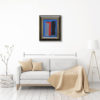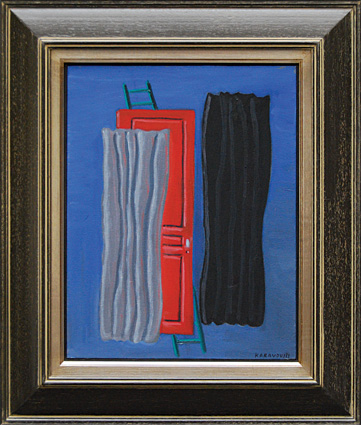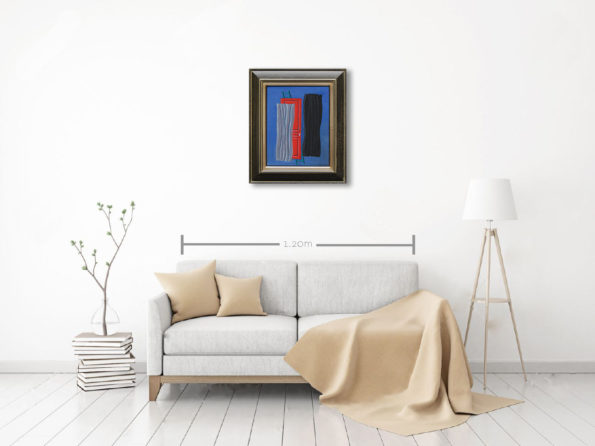From the list for the exhibition “Reconstructions”


Code:
Ζ37-03
Title:
Untitled
Dimensions:35 × 45 cm
Material
Description:Oil on canvas
It was presented in an exhibition of Ikastikos Kiklos in 2008.
“What’s more paradoxical and at the same time cheerful of three colored curtains that travel with an undeclared destination?”
Niki Loizidis
From the list for the exhibition “Reconstructions”
This (redeeming) sense of light-emitting objects also features a parallel sub-unit of works depicting stylized curtains painted - like the rest of the compositions - in bright red, green, yellow, blue and turquoise colors. Rather, a curtainship is suspended by a statuary-memory of a constant theme of his previous work-he suddenly unleashes behind a door. A large-scale matrix depicting objects in perceptual elongation also functions as a "monumental" sign of the spirit and the new symbolic expression that characterize this unity.
Is this a change in the way the artist deals with the form, or is this new tendency of his painting a consequence of a different and gradually shaped internal perspective? I personally believe that both are happening for the simple reason that both versions are deeply interrelated. Is this heavily experienced search for unrighteousness and minimal not the consequence of the reconsideration of the function of the symbols? The figurative elements that once were the bodies of the enigma and the impeccably directed mystery (half-open doors, drawn curtains) now become its undoing or its reopening on a different basis.
Niki Loizidis
From the list for the exhibition "Reconstructions"


